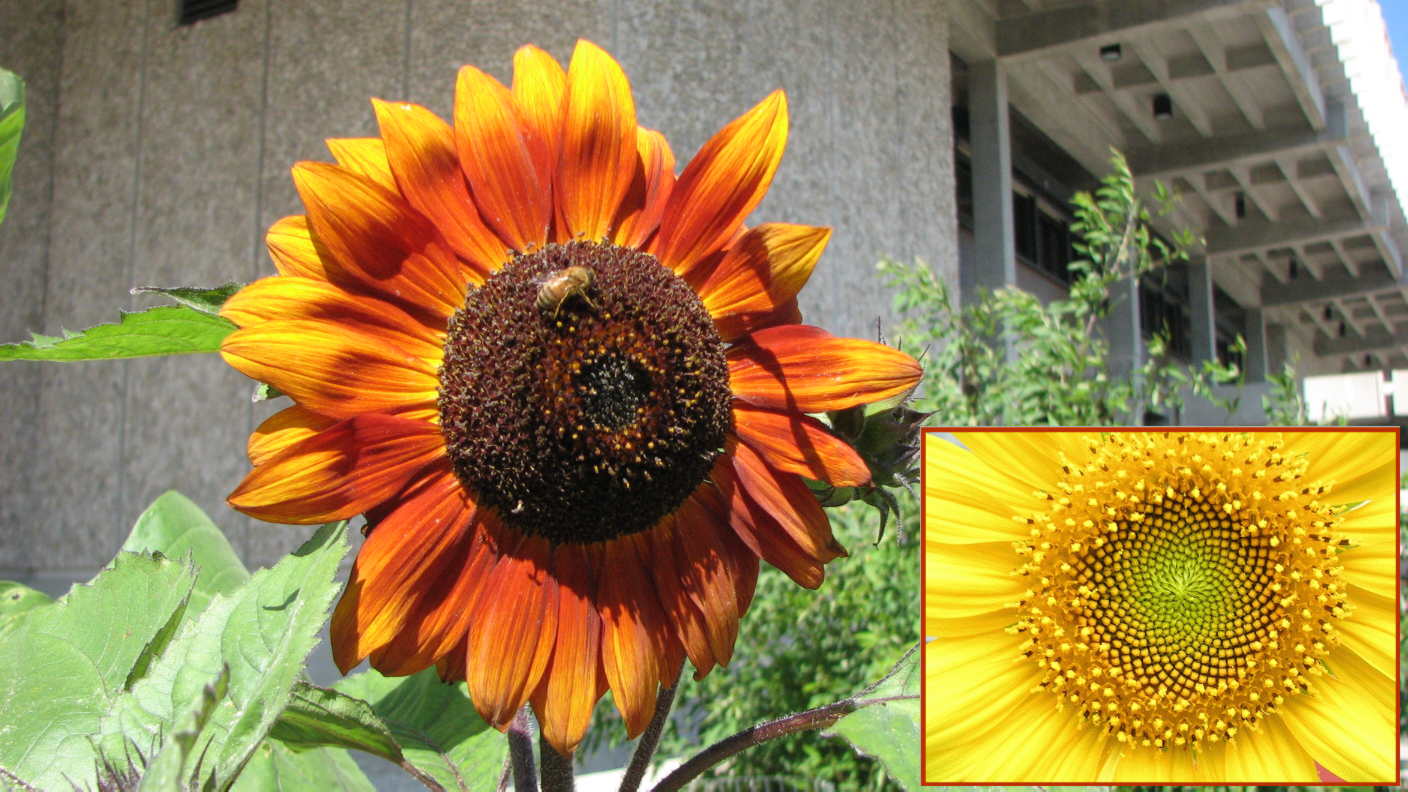Follow the Sun
The sunflower (Helianthus annuus) is an annual plant in the family Asteraceae and native to the Americas, with a large flowering head (inflorescence). The stem can grow as high as 3 meters (9 3/4 ft,) and the flower head can reach 30 cm (11.8 in) in diameter with the "large" seeds. The term "sunflower" is also used to refer to all plants of the genus Helianthus, many of which are perennial plants.
What is usually called the flower is actually a head (formally composite flower) of numerous florets (small flowers) crowded together. The outer florets are the sterile ray florets and can be yellow, maroon, orange, or other colors. The florets inside the circular head are called disc florets, which mature into what are traditionally called "sunflower seeds," but are actually the fruit (an achene) of the plant. The inedible husk is the wall of the fruit and the true seed lies within the kernel.
The florets within the sunflower's cluster are arranged in a spiraling pattern. Typically each floret is oriented toward the next by approximately the golden angle, 137.5°, producing a pattern of interconnecting spirals where the number of left spirals and the number of right spirals are successive Fibonacci numbers. Typically, there are 34 spirals in one direction and 55 in the other; on a very large sunflower there could be 89 in one direction and 144 in the other. As you can see, the bees have destroyed the mathematical pattern of this flower and the insert is to show how it looks when undisturbed.
Sunflowers in the bud stage exhibit heliotropism. At sunrise, the faces of most sunflowers are turned towards the east. Over the course of the day, they follow the sun from east to west, while at night they return to an eastward orientation. This motion is performed by motor cells in the pulvinus, a flexible segment of the stem just below the bud. As the bud stage ends, the stem stiffens and the blooming stage is reached. Right now, this sunflower in bloom is not heliotropic anymore. The stem has "frozen", typically in an eastward orientation. The stem and leaves lose their green color.
Follow the Sun with the Beatles! Click to play.


No comments:
Post a Comment